|
Fluorite: The Collector's Stone
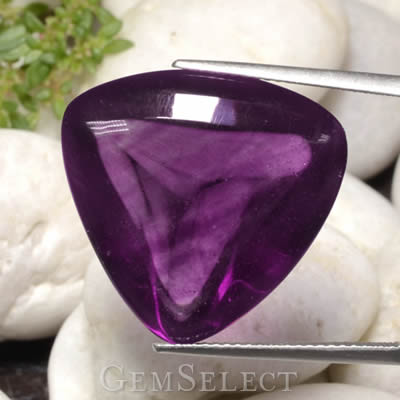
Purple Fluorite Gemstone
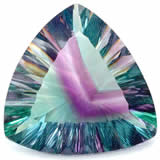
Fluorite is the second-most popular mineral in the world among mineral collectors next to quartz. Famed for its enormous range of colors, it is often referred to as "the most colorful mineral in the world." But fluorite is not just another pretty stone; it has a number of fascinating properties and some very useful industrial applications.
Fluorite is interesting to mineral collectors because it has several different crystal habits that result in well-formed clean crystals. The cube is by far the most recognized habit of fluorite, followed by the octahedron, which is believed to form at higher temperatures than the cube. Fluorite has perfect octahedral cleavage. This means that it has four identical directions of cleavage, which can produce a perfect octahedral or diamond shape when cleaved correctly. These cleaved octahedrons are popular in rock shops all over the world. However, the natural (e.g. uncleaved) octahedrons are much harder to find.
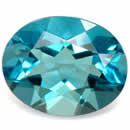 Many fluorite specimens exhibit fluorescence under ultraviolet light. In fact the very term 'fluorescence' comes from 'fluorite,' not the other way round, since fluorite was one of the first fluorescent minerals studied. The visible light emitted by fluorite is most commonly blue, but red, purple, yellow, green and white also occur. The fluorescence of fluorite is thought to be due to impurities such as yttrium or organic matter in the crystal lattice. Therefore, it is not surprising that the color of visible fluorescent light emitted by fluorite specimens appears to be dependent upon where the original specimen was collected. Many fluorite specimens exhibit fluorescence under ultraviolet light. In fact the very term 'fluorescence' comes from 'fluorite,' not the other way round, since fluorite was one of the first fluorescent minerals studied. The visible light emitted by fluorite is most commonly blue, but red, purple, yellow, green and white also occur. The fluorescence of fluorite is thought to be due to impurities such as yttrium or organic matter in the crystal lattice. Therefore, it is not surprising that the color of visible fluorescent light emitted by fluorite specimens appears to be dependent upon where the original specimen was collected.
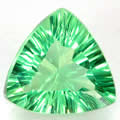 The name fluorite originates from its historical role as a flux to reduce the melting point in steel and aluminum production. Miners initially called it "fluorspar." Fluorite serves as a key source of fluorine for hydrofluoric acid and fluorinated water. Interestingly, the element fluorine derives its name from fluorite. The name fluorite originates from its historical role as a flux to reduce the melting point in steel and aluminum production. Miners initially called it "fluorspar." Fluorite serves as a key source of fluorine for hydrofluoric acid and fluorinated water. Interestingly, the element fluorine derives its name from fluorite.
Fluorite is used instead of glass in some high performance telescopes and camera lens elements. Fluorite has a very low level of dispersion so it diffracts light far less than ordinary glass, so when used in telescopes it allows crisp images of astronomical objects even at high power.
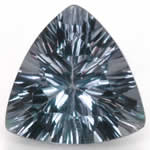 Fluorite is of interest as a gemstone because of its remarkable range of colors and its attractive vitreous luster. Most specimens of fluorite have a single color, but a significant percentage of fluorite gemstones have multiple colors and the colors are arranged in bands or zones that correspond with the shape of the crystals. Fluorite is a relatively soft stone, rating only 4 on the Mohs scale, so it is not very practical for some types of jewelry, though it is suitable for pendants, earrings and brooches. Fluorite is of interest as a gemstone because of its remarkable range of colors and its attractive vitreous luster. Most specimens of fluorite have a single color, but a significant percentage of fluorite gemstones have multiple colors and the colors are arranged in bands or zones that correspond with the shape of the crystals. Fluorite is a relatively soft stone, rating only 4 on the Mohs scale, so it is not very practical for some types of jewelry, though it is suitable for pendants, earrings and brooches.
Purple or violet is the classic fluorite color, often rivaling amethyst for richness. Blue fluorite is fairly rare and much sought after by collectors. The brilliant yellow is also quite rare. The rarest fluorite colors are pink, black and colorless. Black fluorite is formed from exposure to radiation during the growth of the crystals. Colorless fluorite, though not particularly attractive, is prized by collectors simply for its rarity.
|